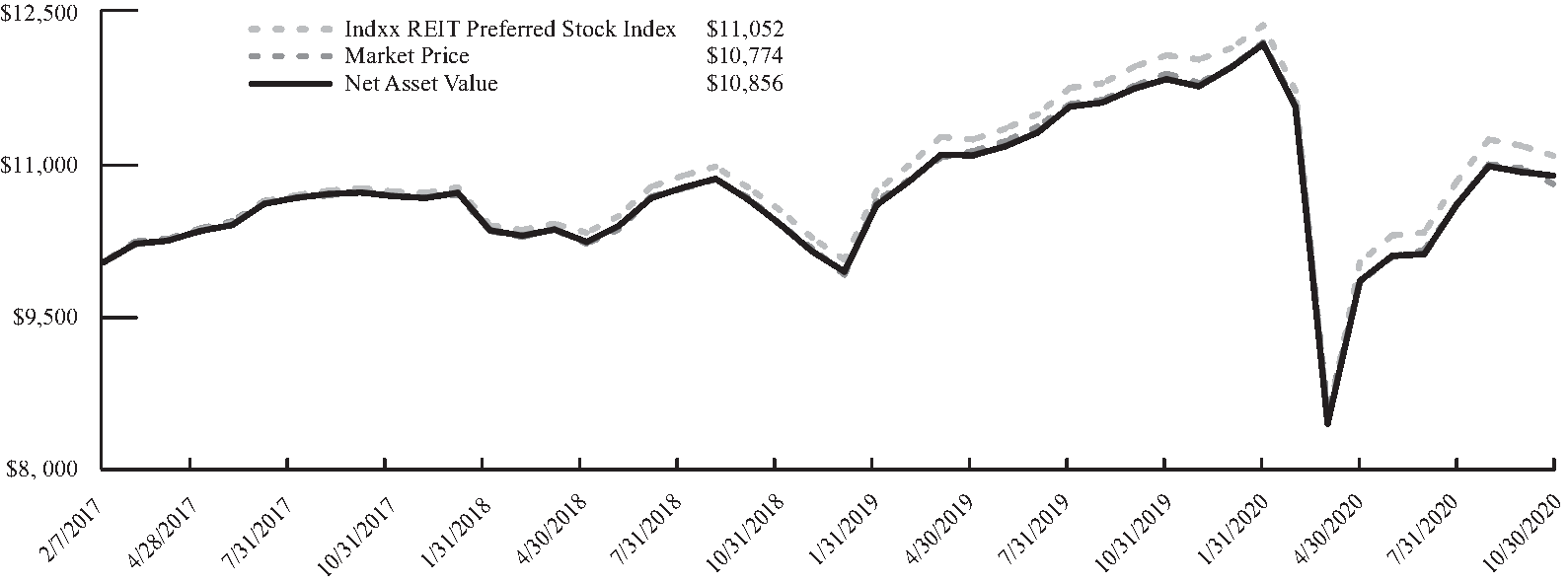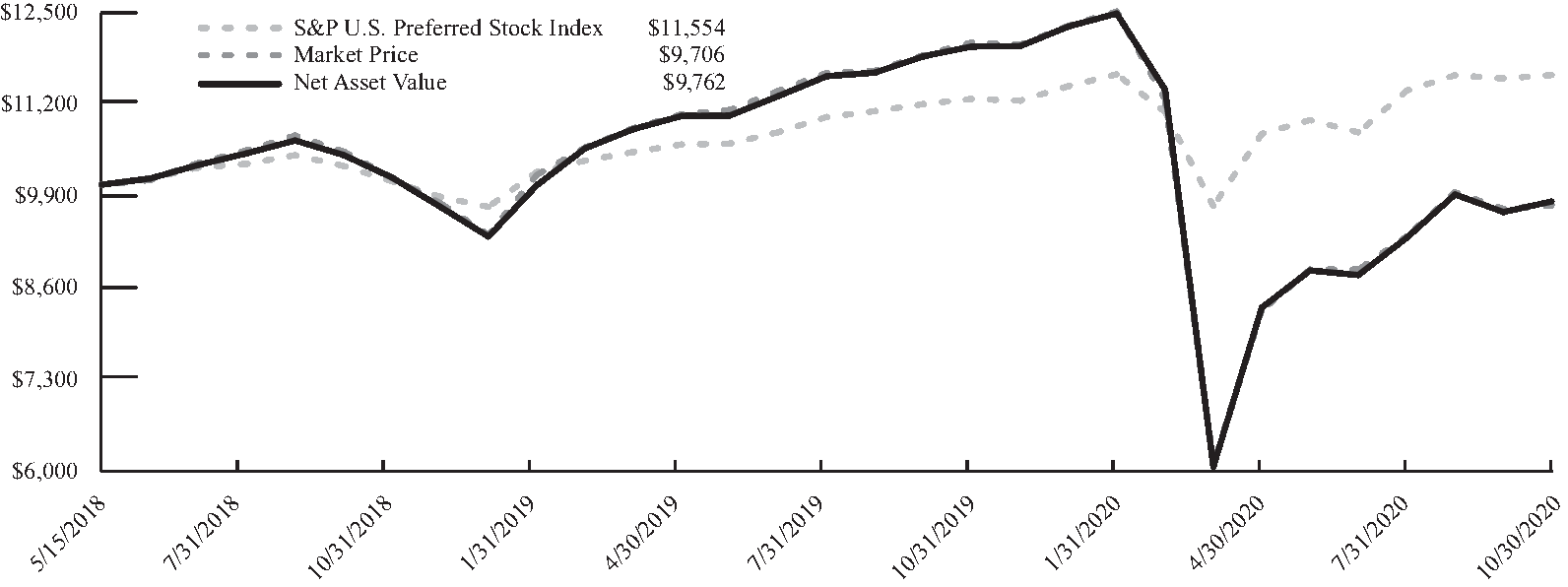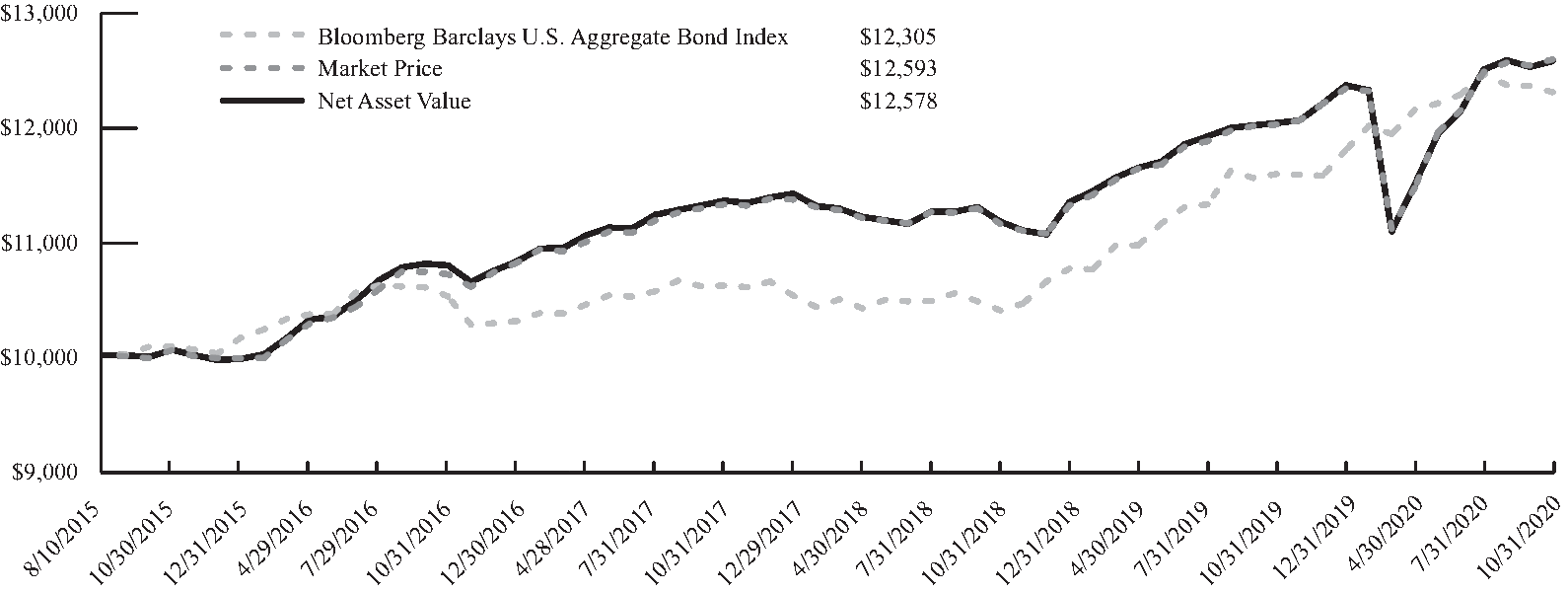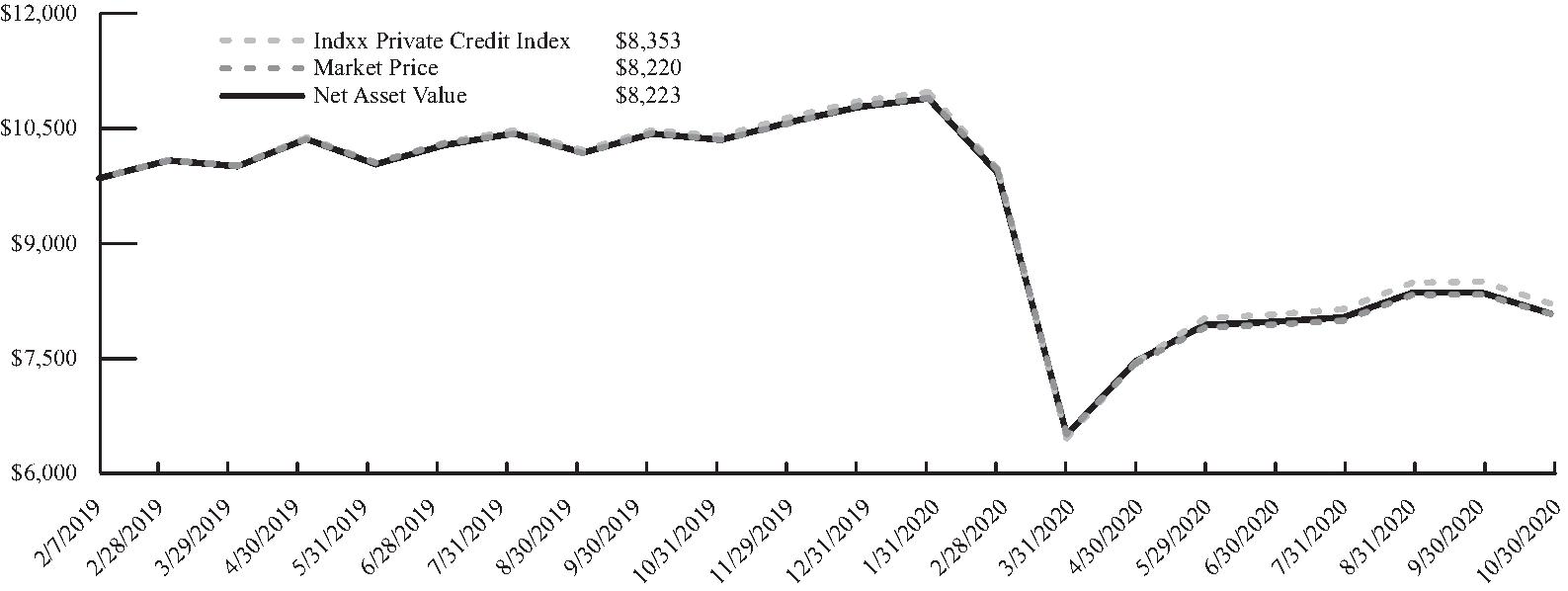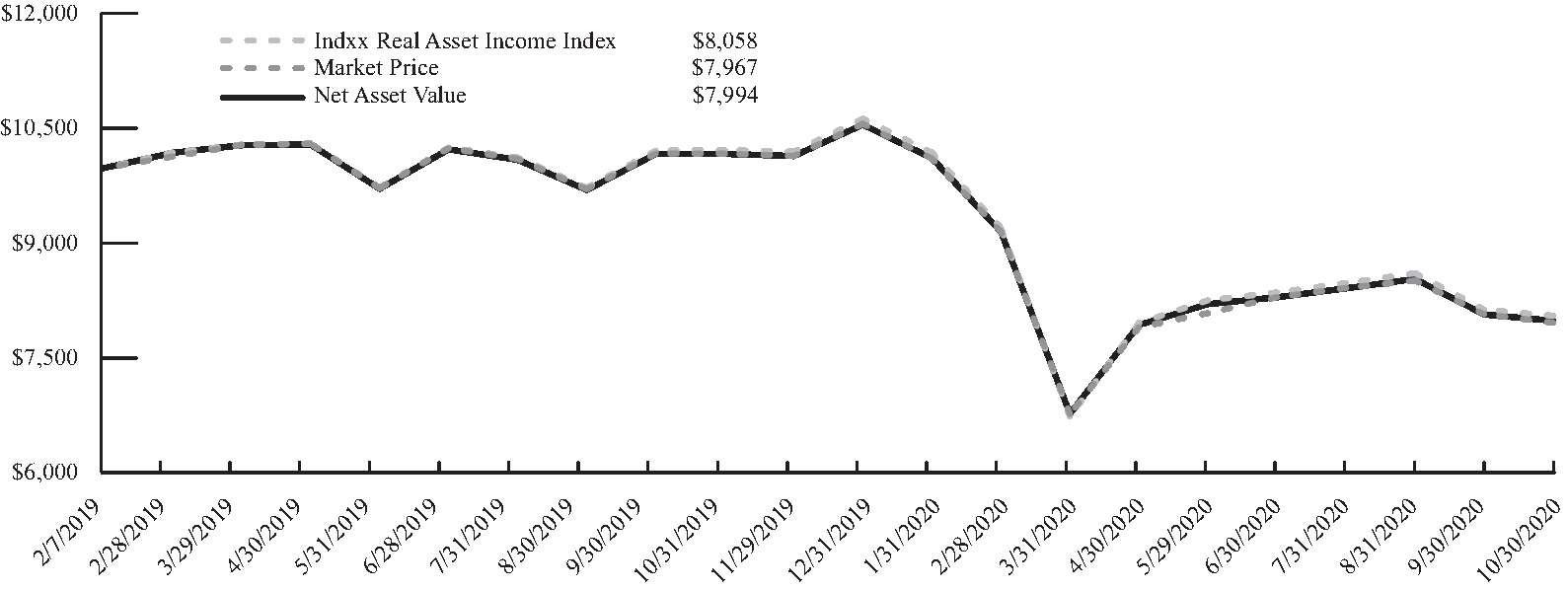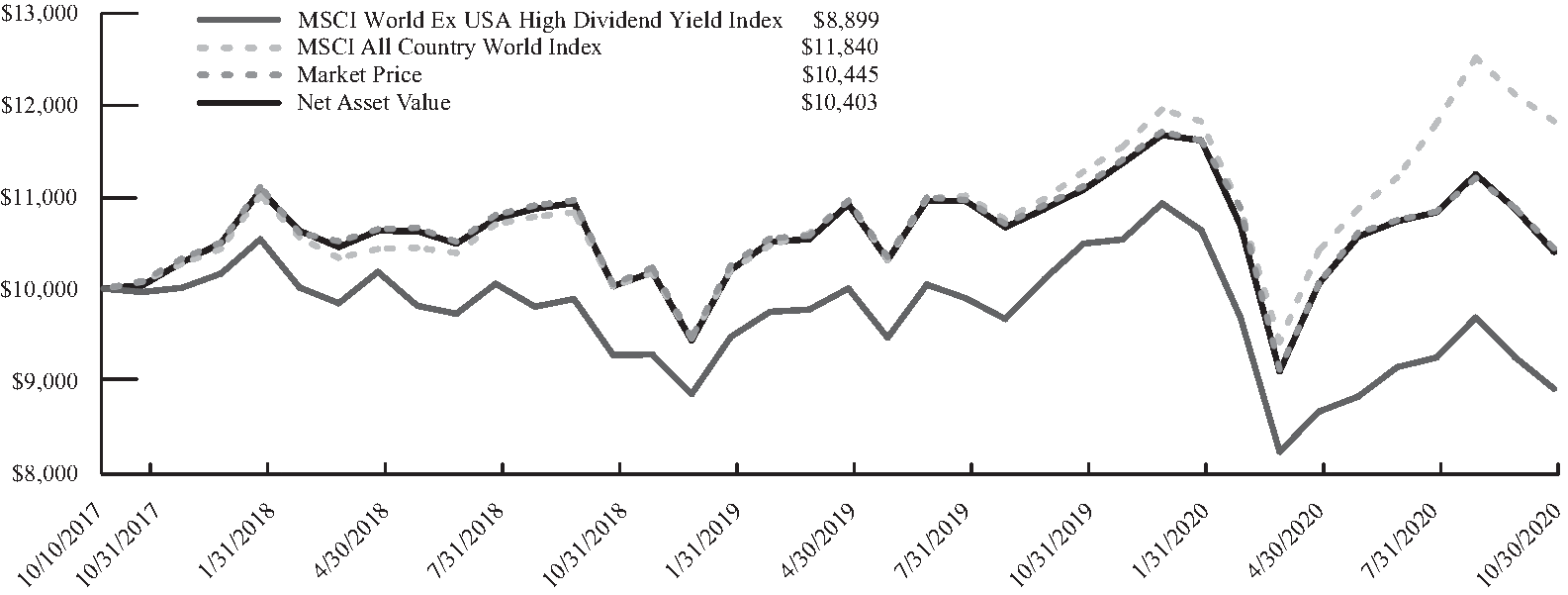Virtus WMC International Dividend ETF
Management’s Discussion of Fund Performance for one-year period through 10/31/2020
During the period presented, the Virtus WMC Global Factor Opportunities ETF (NYSE: VGFO) transitioned to the Virtus WMC International Dividend ETF (NYSE: VWID) (the “Fund”) effective July 20, 2020 (the “Repositioning”). As such, the below commentary reflects performance of the Fund utilizing the VGFO strategy for the period 11/01/2019 – 7/19/2020 and performance of the Fund utilizing the VWID strategy for the period 7/20/2020 – 10/31/2020.
Virtus WMC Global Factor Opportunities ETF (11/01/2019 – 7/19/2020)
Prior to the Repositioning, the Fund was an actively managed ETF that employed a dynamic, global multi-factor strategy that combined a quantitative investment approach with active management. Wellington Management’s proprietary value1, momentum2, and quality3 factors were used to drive stock selection within four distinct world regions—the U.S., Japan, Europe, and Emerging Markets—to create a diversified portfolio which sought to adapt to changes in the risk environment.
Despite extreme levels of volatility following the COVID-19 sell-off in the first quarter of 2020, global equities rose during the period presented, as measured by the MSCI All Country World Index. During the period, U.S. and Emerging Market stocks finished higher, while Europe and Japan equities declined. Growth and momentum factors performed best across all four regions, as companies that tend to screen well for these factors are also the types of companies that were poised to do well during a pandemic-type environment. This includes higher growth companies in the technology, communication services, and biotechnology industries. Meanwhile, higher quality and low volatility factors were mixed across regions, and did not provide the expected level of protection. Value factors performed the worst in each region, underperforming during the first quarter sell-off and lagging during the subsequent recovery.
During the period November 1, 2019 through July 19, 2020, the Fund’s net asset value (“NAV”) increased by 1.42%, underperforming its benchmark, the MSCI All Country World Index (net), which rose by 3.91%. The Fund’s Europe and Emerging Markets allocations outperformed their regional benchmarks during this period, while the Fund’s U.S. and Japan allocations trailed their benchmarks.
Underperformance relative to the MSCI All Country World Index during the period November 1, 2019 through July 19, 2020 was due to narrow market leadership in the U.S., where the outperformance of the largest benchmark constituents, notably Apple, Amazon, Facebook, Google, and Microsoft, drove market returns. The Fund’s underweight exposure to these mega-cap technology names was the most significant headwind to relative returns during this period. In particular, not owning Apple and holding a relative underweight exposure to Microsoft and Google accounted for a majority of the negative excess returns during this period.
______________
1Value factor is defined as one that captures the extent to which a stock is priced inexpensively in the market.
2Momentum factor is defined as one that captures sustained relative performance.
3Quality factor is defined as one based on low volatility.
Virtus WMC International Dividend ETF (7/20/2020 – 10/31/2020)
The Fund is designed to provide a higher dividend yield than is generally provided by equity markets in developed ex-U.S. countries while seeking to be more diversified than traditional equity income approaches. The Fund targets a beta of 0.9 to core equities. Portfolio securities are selected if we believe their high yield characteristics will help meet the Fund’s income objective, or due to their perceived ability to help diversify risks in the portfolio. The names that we believe help diversify risk are often those that are members of the core index (the MSCI World ex USA Index) but not the high yield benchmark (the MSCI World ex USA High Dividend Yield Index), and that exhibit characteristics that high yielding stocks in the aggregate tend to lack, such as growth.
During the period July 20, 2020 through October 31, 2020, high yielding non-U.S. equities posted negative absolute returns and underperformed core equities (as measured by the MSCI World ex USA High Dividend Yield Index and the MSCI World ex USA Index, respectively). Higher yielding segments of the market that make up a larger portion of the equity income universe than core, such as insurance companies and energy stocks, underperformed during this period. Meanwhile, higher growth stocks, which are the companies that do not typically pay dividends and are therefore not often found in the equity income universe, outperformed. Headwinds from these exposures resulted in weaker absolute returns for dividend paying stocks relative to core equities during this period.
During the period July 20, 2020 through October 31, 2020, the Fund’s NAV decreased by 6.66%, underperforming its benchmark, the MSCI World ex USA High Dividend Yield Index (net), which declined by 5.91%.
The Fund’s structurally lower beta exposure was the main detractor from relative returns during this period. Because we believe that equity income allocations should provide some defensive characteristics relative to core equities, the portfolio targets a below-market beta. While it is our opinion that this positioning is generally beneficial over a full market cycle, this structural underweight exposure was a headwind during this period.

